Selecting a properly-sized pool filter is the first and most important step to maintaining clean and clear pool water. Pool filters help your sanitizer focus on destroying bacteria by sifting dirt, debris, and contaminants out of the water. There are three types of pool filters, sand, cartridge, and diatomaceous earth (D.E.), and each one is excellent at its job. But is one better than the other? Is there a “best pool filter?” Let’s break down each type of pool filter and determine if one rises to the top as the best pool filter.
Sand Filters

Sand filters, the most common type of pool filter, contain special silica sand inside the large tank. When water flows through the sand, it traps debris and particles, leaving clean water to return to the pool. Capable of filtering 20–40 micron-sized particles, sand filters are excellent at trapping larger debris, but are less effective at filtering smaller particles. Sand filters are low maintenance and also relatively inexpensive compared to other types of filters.
Continued use of a sand filter results in debris buildup and increases the pressure inside the tank. When the filter’s pressure gauge reads 8–10 psi above the standard rate, it’s time to backwash the filter. Backwashing the filter flushes out the debris buildup inside the tank and will drop the pressure gauge back to normal.
Pros
- Low maintenance
- Least expensive purchase cost
- Can filter large volumes of water quickly
Cons
- Not as efficient at filtering small particles as other types of filters
- Requires backwashing to clean the filter, which can waste water
- Sand needs to be replaced every 3-5 years
Cartridge Filters
Cartridge filters use a pleated filter cartridge inside the tank to trap debris and particles. As water flows through the cartridge, the pleats trap dirt and debris, before sending clean water back to the pool. Cartridge filters are more efficient at filtering small particles, 10–20 microns, than sand filters, and require less maintenance. They also don’t require backwashing, which saves a significant amount of water over time.
Cleaning a cartridge filter involves removing the cartridges and gently hosing off the debris, whenever the pressure gauge reads 8–10 psi higher than normal. However, each time you clean a filter cartridge, you reduce its filtering ability. The more frequently a cartridge is cleaned, the sooner you will need to replace it. New filter cartridges cost approximately $30–$100 and should be replaced every 2–3 years.
Pros
- More efficient at filtering small particles
- Most energy efficient
- Require less maintenance than sand filters
- Do not require backwashing, which saves water
Cons
- Cartridges need to be replaced every 2–3 years
- Initial cost is higher than sand filters
- Can be less effective at filtering large volumes of water quickly
D.E. Filters
Diatomaceous Earth filters, better known as D.E. filters, use diatomaceous earth-covered grids to trap pool water contaminants. Just like sand and cartridge filters, the grids inside the filter tank catch debris as the water flows through the tank. D.E. filters are the most precise type of filter, trapping particles as small as 1–3 microns in size. They are also incredibly efficient and can filter large amounts of water in one cycle.
Similar to sand filters, cleaning a D.E. filter involves backwashing the debris out of the filter when the pressure gauge is 8–10 psi above normal. However, there is one additional step to complete a D.E. cleaning — replenishing the lost powder. After backwashing, you need to add more D.E. powder into your pool’s skimmer to refill the filter tank, which can become costly if you backwash the filter frequently.
Pros
- Most efficient at filtering small particles
- Can filter large volumes of water quickly
- Easy to replace D.E. powder
Cons
- Require regular maintenance in addition to regular backwashing
- D.E. powder needs to be replenished after every backwashing
- Most expensive purchase cost
Filter Efficiency
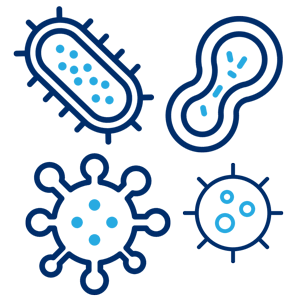
When it comes to efficiency, each type of pool filter has its own strengths and weaknesses. All filters work a bit better when they are slightly dirty, hence the range of micron-trapping ability. A clean sand filter may filter down to only 40 microns, but as dirt loads up in the sand bed, it may effectively trap particles in the 20 micron range. All filters will maintain clear water in a well balanced and clear pool, but only those that can trap very small particles can clean up adverse water conditions quickly.
For spring pool openings or algae blooms, for example, a D.E. filter can resolve these situations in 1-2 days, but sand filters can take over a week and require the use of a water clarifier or other chemicals. Other factors affecting filtering ability include the water flow rate and filter media age. High flow rates, higher than the recommended design flow rate, will produce poor filtration, pushing smaller particles right through the filter. As filter sand or filter cartridges age, they lose up to half of their dirt-trapping power and need to be replaced.
So, let’s dive into the efficiency levels of sand, cartridge, and D.E. filters.
Sand Filters
Sand filters are known for their ability to filter large volumes of water quickly, making them an efficient choice for larger pools. However, they are less efficient at filtering small particles than other types of filters. Sand filters typically have a filtration rating of around 20–40 microns, meaning they can only remove particles of that size or larger. Smaller particles not trapped by the sand stay in your pool water.
Cartridge Filters
Coming in second place, cartridge filters are more efficient at filtering small particles than sand filters. They typically have a filtration rating of around 10–20 microns, which means they can remove smaller particles than sand filters. Cartridge filters are also better at maintaining a consistent flow rate, which can lead to more efficient filtration overall.
D.E. Filters
D.E. filters are the most efficient type of pool filter when it comes to filtering small particles. They typically have a filtration rating of around 2-5 microns, which means they can remove the smallest particles out of the three types of filters. D.E. filters are also efficient at maintaining a consistent flow rate, which can lead to more efficient filtration overall.
Filter Purchase Cost
D.E. filters are the most expensive type of filter, costing between $1,099 for the Hayward Pro-Grid 36 sq. ft. filter, and $1,819 for the Pentair Quad 100 sq. ft. filter. This price is mainly due to how many parts D.E. filters have, but also because they are the most efficient filter. Cartridge filters are the second most expensive filter, costing as much as $1,400 for the Jacuzzi JCF425 425 sq. ft. filter. Fewer parts, plus no need to buy a separate multiport valve, keeps the purchase cost of cartridge filters low. And finally, due to their simple construction and operation, sand filters are the most affordable, and thus the most common type of filter. Models range in price from $300 for the Raypak Protege filter, to $1,379 for the Pentair Triton II.
Media Lifespan
The tank of your pool filter can last 25 years or more, but the filter media, the stuff inside that does the filtering, will become worn out over time, eventually becoming evident in cloudy water and short filter cycles (time between backwash or cleaning). Tired filter media need longer filtration time and more frequent cleaning or backwashing to keep the filter pressure low. You’ll also need more sanitizer, clarifier, and other chemicals to assist your ailing pool filter. The size of your filter will also greatly affect the filter media lifespan. If your filter is double the size, the filter media may last twice as long: six years for cartridges, 10 years for sand and 15 years for D.E. grids.
Media Replacement Cost
Changing filter cartridges is the easiest filter media replacement. Just open the tank and swap out the carts. Changing filter sand involves scooping out the sand by hand and pouring in new sand through the top access port. D.E. filter grid replacement involves opening the tank, and removing and cleaning the grids, followed by a complete disassembly and reassembly of the filter grid assembly. Replacing filter sand or the D.E. filter grids is more difficult and time-consuming (1-2 hours), but certainly DIY-friendly.
Sand
Cartridges
D.E. Powder
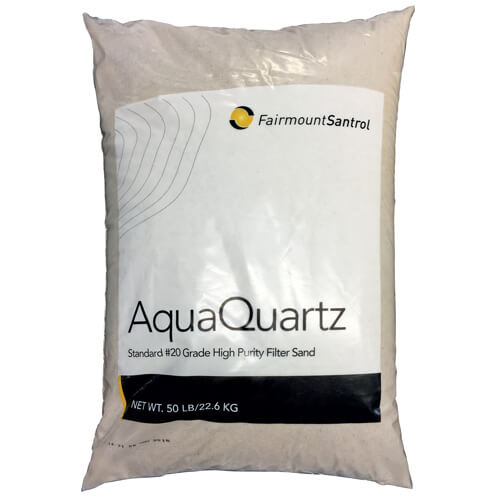
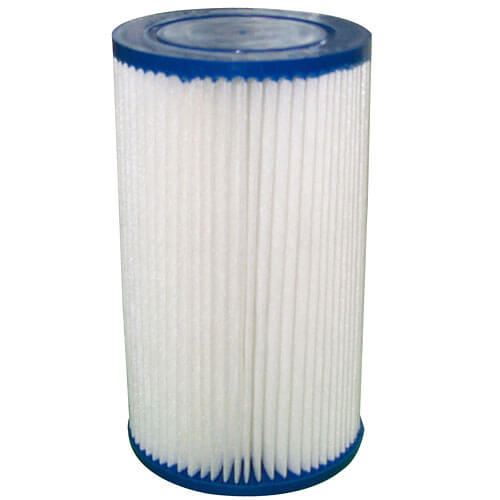
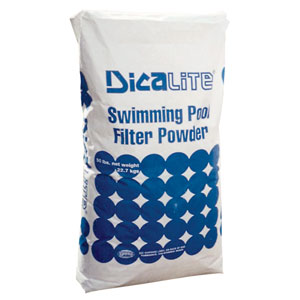
Sand
With continued use, filter sand will begin to lose its gritty texture and become smooth. This erosion of sand leads to less effective filtering and dirty water because the sand is no longer able to trap debris. When this starts to happen, you’ll need to replace the filter sand. Pool filter sand typically costs $20 for a 50 pound bag, and most inground pool filters use about 300–500 pounds of filter sand depending on the filter size. So on average, replacing the sand in your sand filter will cost roughly $96–$160, every 3–5 years. Additionally, sand alternatives like Zeolite Sand, FilterBalls, and Filter Glass are available and can cost less than traditional sand.
Cartridge
As filter cartridges age, the fibers holding the pleats together start to break down and deteriorate. And the more deteriorated the cartridges become, the less effective the filter is. That’s why it’s important to replace filter cartridges every 12–15 cleanings, or every 3–5 years. Replacement cartridges can be purchased individually, or in packs of 4.
D.E.
D.E. filter grids are the fabric-coated plastic frames inside the filter tank. Over time, the stitching will unravel or holes can develop in the fabric. Not to mention the strain that poor water chemistry can put on the grids. Most D.E. filters have eight grids, and complete D.E. grid sets are available for $100–$150 or individually for around $20 each. Replacement D.E. or cellulose powder costs roughly $35 for a 25-pound bag.
Filter Water Usage
If you are located in a dry area with pool water use restrictions, your city may have already chosen your next pool filter for you. Cartridge filters are the most water-conscious filter and are preferred in drought-stricken areas, as they do not require backwashing.
D.E. filters are second on the list for water conservation, as they require minimal backwashing. D.E. filters can be “bumped” every few weeks to reduce the frequency of backwashing. A “bump” is a short, 10-15 second backwash that mixes up the dirt and D.E. powder. Sand filters, however, require more frequent and longer backwashing cycles, using more wastewater than other filter types.
Maintenance & Care
A sand filter is the simplest filter design, with fewer parts and less potential problems. It does, however, have a multiport or push-pull backwash valve, which often requires more maintenance than the filter itself. D.E. filters have the most internal and external filter parts and require annual removal, cleaning and inspection of the grid assembly. Which opens the door for more potential problems. Cartridge filters have a simple design with few parts. Therefore, it is less likely that a cartridge filter will break down or require frequent repairs.
At the end of the day, each type of pool filter has its own efficiency level when it comes to removing debris from the water. Sand filters are efficient at filtering large volumes of water quickly, cartridge filters are more efficient at filtering small particles, and D.E. filters are the most efficient at filtering small particles. When choosing a pool filter, consider the size of your pool, the level of usage, and the amount of debris in your pool to determine which type of filter will be the most efficient for your needs.

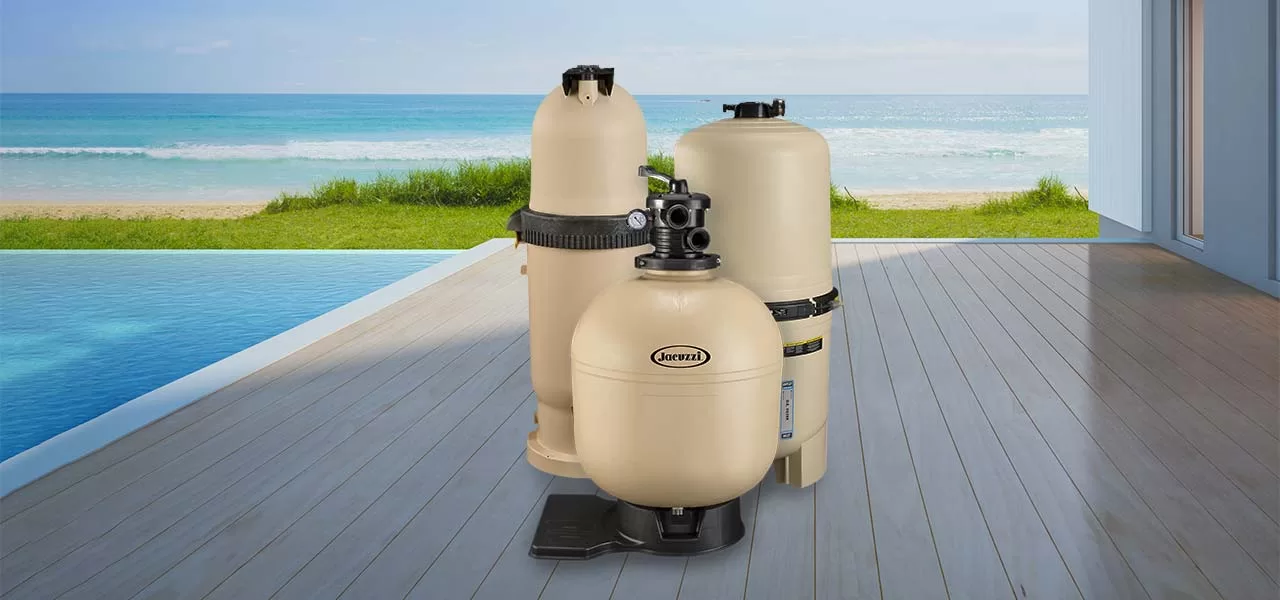
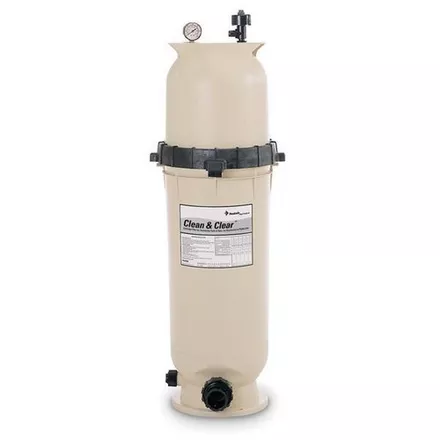
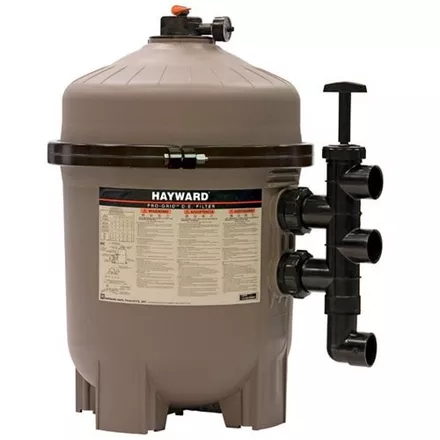
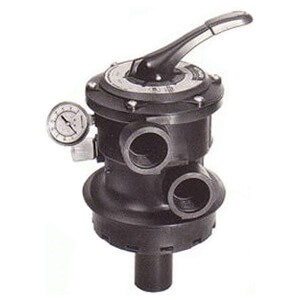
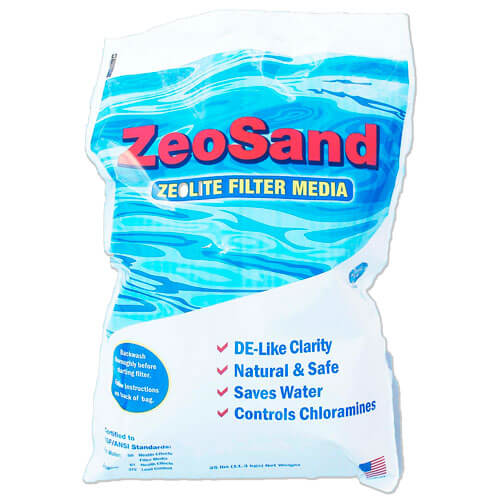
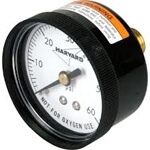
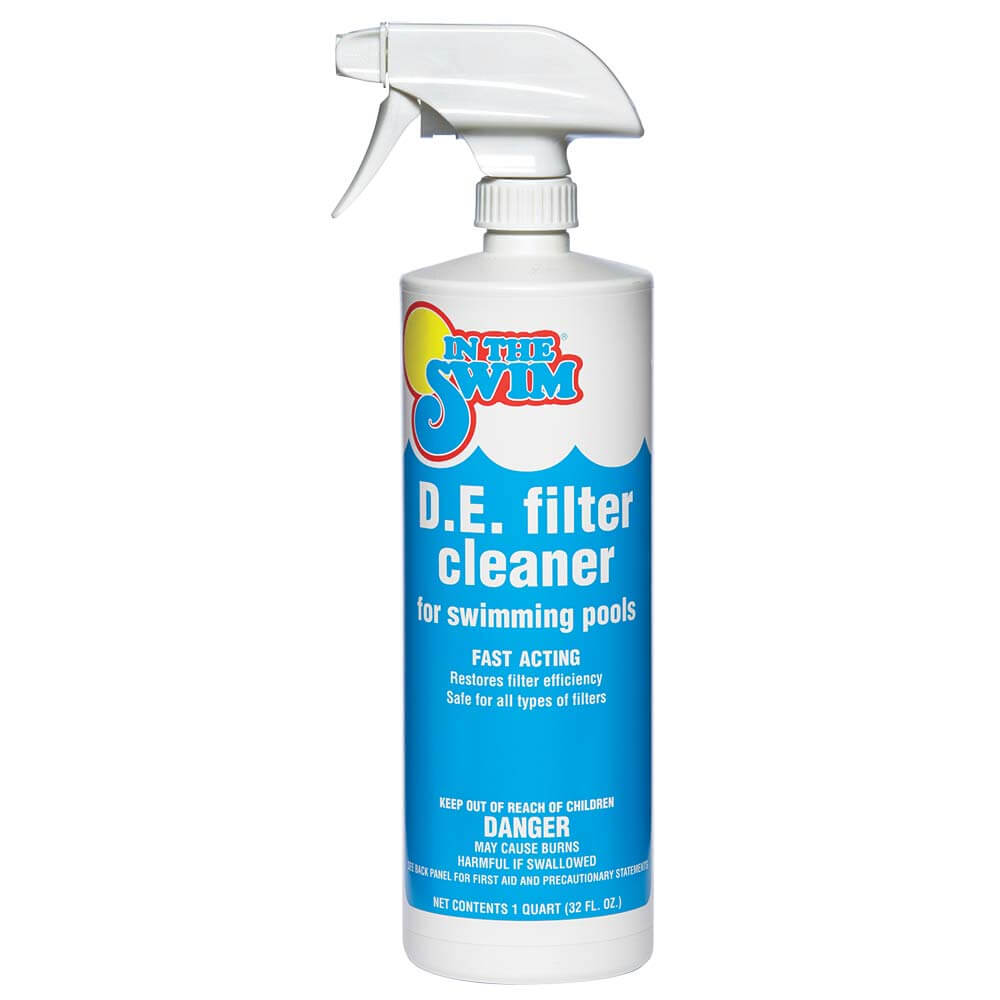
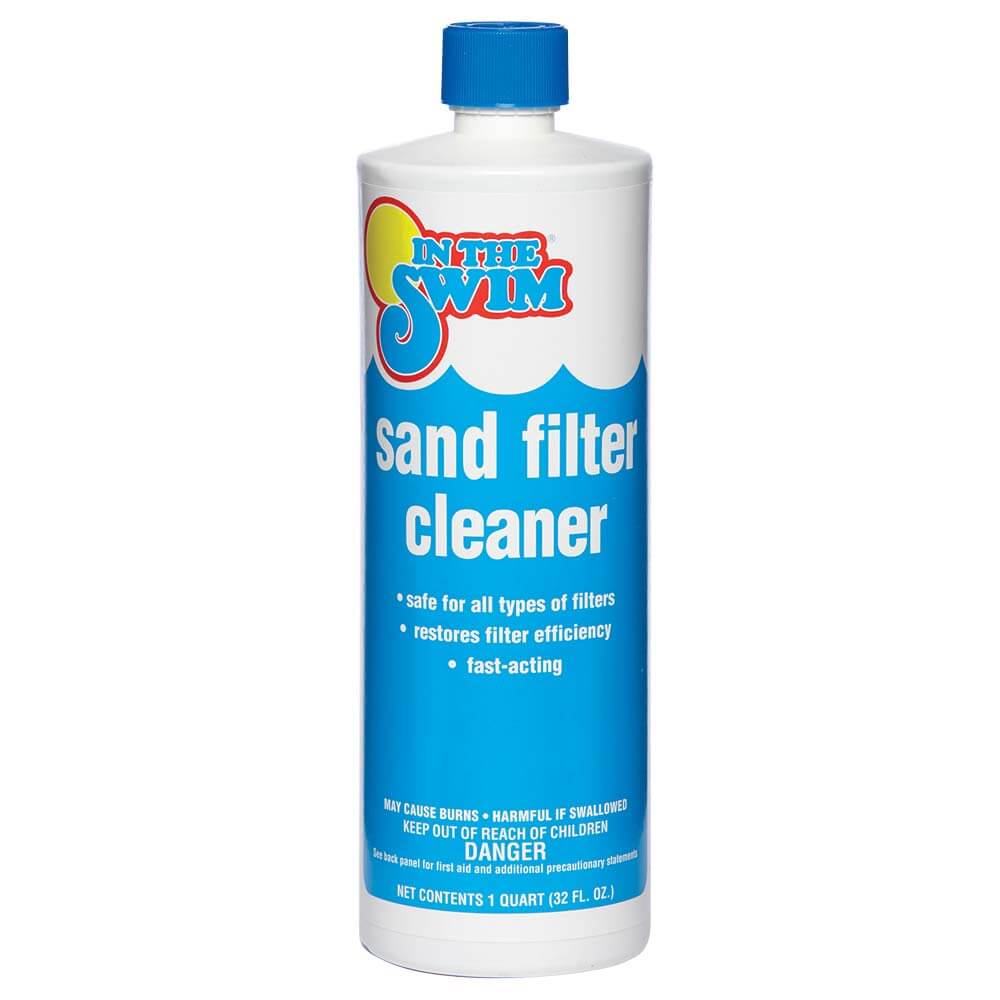
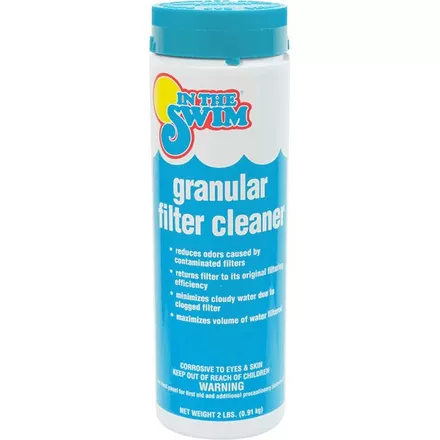
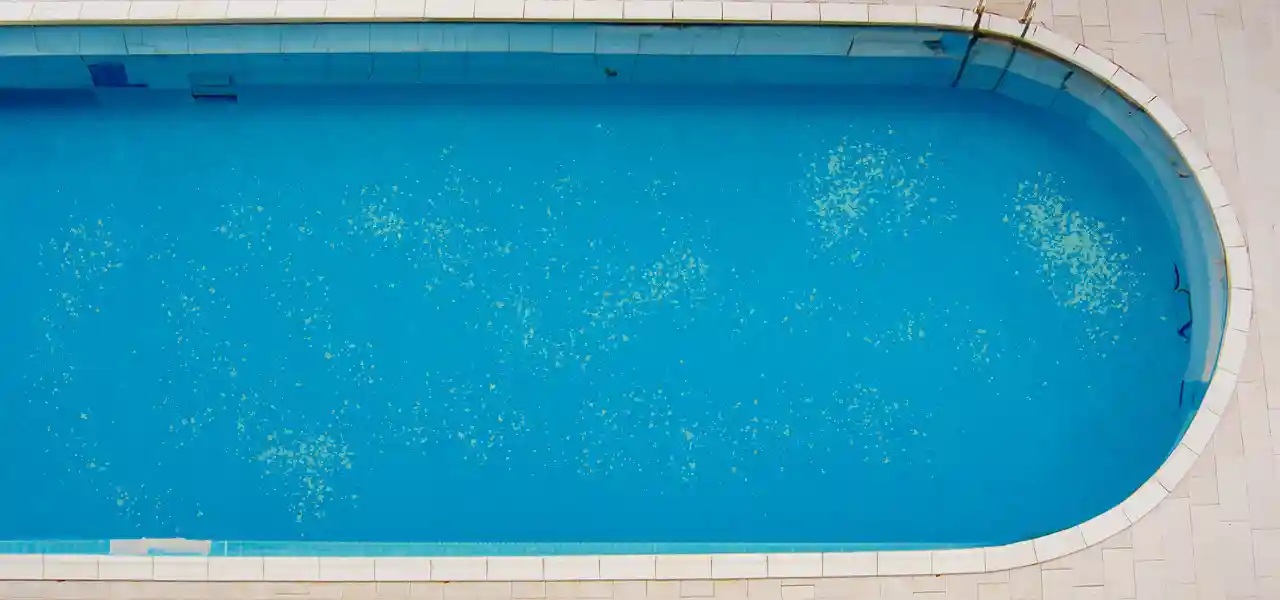
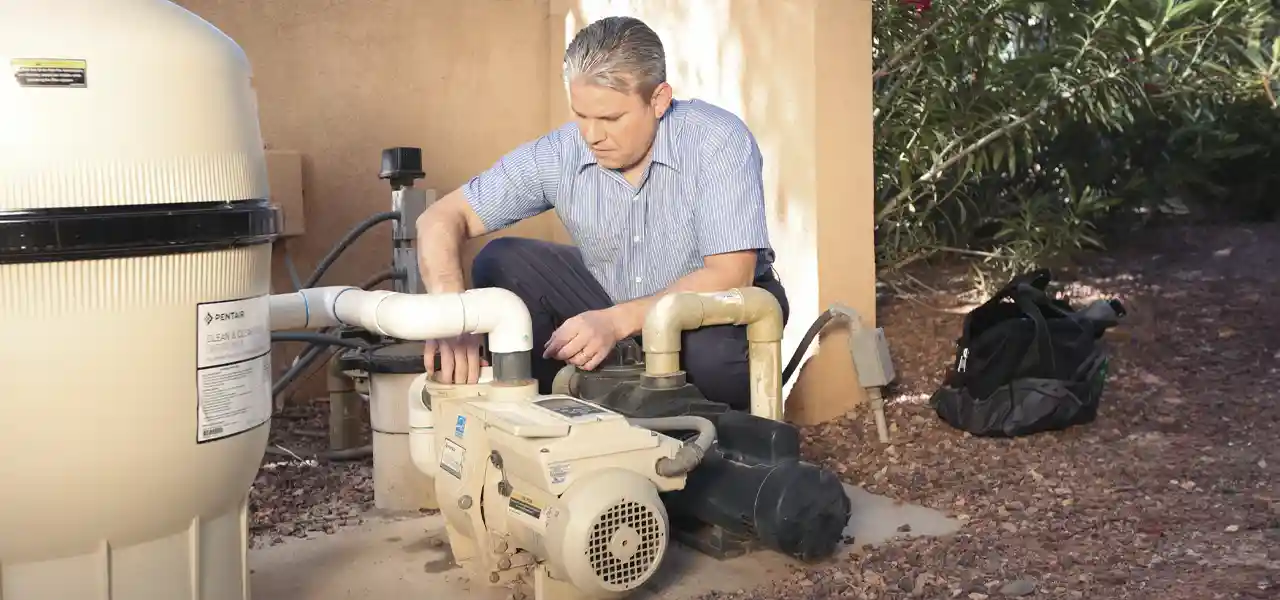
i have a 24ft size pool that i just had installed but i had a sand filter installed. i should of had a carthridge filter installed because i cannot backwash. my access to backwash is not very accesible. so i was just told i neede a carthridge filter instead but my sales person never told me about this even though he knew my pool was going to be installed inside. anyway am replacing the pump with a carthridge pump. my question is what type or size of carthridge pump do i need for my 24 ft pool?
Hi Christina, I like to see 100 SF of cartridge filter surface area, per 10,000 gallons of pool water. A typical 24′ round pool has about 13K gals, so a filter size of 125 SF, or 150 SF would be even better (larger filters always better). We have a couple of good 150 SF filters, such as the Waterway ProClean 150, or the Jacuzzi J-C150 filter. We also have a Hayward StarClear 120 SF at a higher price for the Hayward.
hi – I bought a house with a 35000 gal in-ground pool and 500 lb sand filter. It has never filtered well, always leaving very fine particles on the bottom. I’ve replaced the sand and inspected the laterals, but no change. I can vacuum the pool to waste, and within an hour can see the “fines” already accumulating. I tried adding a little DE, but that accumulated on the bottom. Do I need a better filter system or can something be done with my sand system?
Thanx
Hi Ray, before you throw in the towel on sand, you can try Aluminum Sulfate as a filter aid, along with regular use of Clarifier. If that does not seem to help, I wonder about the size of the pool pump. For a 31″ sand filter size, and a 35,000 gal pool, the best flow rate is about 75-95 GPM. More than that, say 125 GPM, and the dirt pushes right thru. Check the flow charts of your pool pump, and see what you can estimate flow to be. If too high, you could build a PVC bypass arrangement, with a valve to let some water return the pool unfiltered, and then just run the pump longer. Another option would be to replace the pump with a variable speed pump, to allow you to run lower speeds and fine tune the flow rate into the filter.
Thx! I will figure our the gpm of my pump. It was replaced before we bought the house and was advertised as “upgraded”.
Thx again!
Hi. We are currently building a 11,000 gal. Geometric pool. I have been researching pool filters and still cannot make up my mind. What would you recommend. Thanks
Hi Alex, I like the DE filter for the superior filtration, but also like a large cartridge filter for the length of filter cycle. I would look at a cartridge filter of 150 – 200 SF, or a 48 SF DE filter. If you wanted sand, a 24″ sand filter. My preference in order would be Cartridge > DE > Sand (but only if each is big and oversized). Would rather have a very large sand filter, than a small cartridge filter…
So.. we got an ez set intex pool this summer and it has been a lifesaver during quarantine. The intex pump was left on dry over night (hose popped off and pool emptied). The impeller is out of whack now and not working. It’s only about 1200 gallons. I want to continue doing this every summer but don’t know which filter pump to run with. Any suggestions? Would a sand filter be better?
In terms of particle size, sand filters are the worst performers, cartridge filters are generally more effective, if sized properly. Sand filters are easier to clean however in that they can be backwashed. For Intex pools, both sand and cartridges will only last 1-2 seasons before it needs replacement, and cartridge is easier to replace. Buy the largest size filter you can afford is my best advice, money well spent. For pools under 15′ round, systems over 1500 GPH will generally require Intex Type B Adapters, to adapt the larger hose size to the smaller pool wall port size.
I have a 5,000 gallon pool, so what sized DE filter should I buy? Or should I just stay with a sand filter as my replacement?
Hi Jack, there are not many DE filters that are made for such small pools. The Hayward Perflex EC-30 comes to mind, but I think that is the only one that would be suitable. Otherwise I would look at sand, with a 12-14″ filter diameter, or if you went cartridge, 50 SF to 75 SF filter cartridge would be a good size.
Im having a problem with my de filter. When punp is running it cannot maintain good strong flow with a full pump basket(water level) but when i backwash and rinse x3 the basket is full to top of water and flow is excellent. Once i put it to normal setting to run pool…the basket nwver remains full ans eventually ill start to get low flonerrors on my heater and salt generator. Ive backwashed the systrem 2 tones already and the problem returns.
So runs well on backwash and rinse… how about recirculate and waste? These are both filter bypass settings. If they run well on both of these, that will make the filter suspect, like maybe the grids need to be pulled out, hosed off, soaked in DE Filter Cleaner and recharged with fresh DE. But if it runs poorly on recirculate, then you may have a problem in the return line, valve or wall fittings, maybe a clog.
What type and size cartridge filter would you recommend for a 22000 gallon above ground pool?
Hi Nic, I like to see 100 sq ft. of cartridge filter area for each 10,000 gallons of water. So a 200 SF filter, as a minimum, but if you like NOT cleaning your filter, you could go larger, like the Waterway 325 or 425 filter, you could go all summer without cleaning.
my 16 year old DE filter has a crack that cannot be fixed. a friend has a 2 year old black diamond (blue torrent) PRC-150 DB cartridge filter she is selling. what are your thoughts?
Hi Lisa, I’m gonna assume that’s a 150 SF cartridge on the PRC-150 model, so that would be good size for a 24′ round, with 15K gallons. I like to see 100 SF for every 10000 gals, when sizing a Cartridge filter. Could be a good purchase. Parts for Blue Torrent systems may not be available, except for cartridges. As opposed to filter systems by Hayward or Pentair or Waterway, where you can get parts if needed. And, you will likely want to buy a new cartridge for this (old) system. But if you can get it for a hundred bucks or so, could be worth it.
What type of filter and pump should I use for a 30000 inground pool
One that will turnover all of the water within an 8-hour period (which does not mean that you should run the filter only for 8-hours). 30,000 / 480 minutes = 62.5 GPM average flow rate as a minimum. That’s is not too much flow. I like the new Waterway Crstal Water filters, the DE> and the Cartridge, are a really good price. I would pair either one of those with the Pentair SuperFlo VS pump.
I bought a house with a 12x24x48 oval pool It has a Hayward Ec40 De filter with a 1hp pump is this sufficient for this size pool?
Hi John, yes that is a good filter system for your size pool. Be sure to add the recommended amount of DE filter powder, and know that DE powder measurements are doubled, meaning that “1 lb.” of DE powder is not 16 oz of dry measure, but would be 32 oz of dry measure. Enjoy the pool, let me know if you have any issues!
What Hayward DE filter would you recommend for a 30,000 gal pool?
Would you recommend the Hayward Pro-Grid DE Pool Filter 60 sq ft?
Or the Hayward W3EC65A Perflex D.E. Pool Filter
Hi there, The Pro-Grid is twice the filter than the Perflex. For 30000 gals, you can use the 48 SF model too, although the 60 SF would have longer filter cycles and clean up any adverse water conditions faster. Perflex EC65A is a good filter for smaller pools, 15-18K gals, EC75A for 18-24K gals.
My DE filter says fress water applications only. Why is this? This is on my salt water pool
Hi Kent, I think that refers more to ‘pools only’ – not lakes or rivers, or ocean water, which has 10x more salt than a saltwater pool. No worries!
Can salt pellets be used along with the sand or as an alternative to sand
Hi, no salt pellets won’t filter the water, and won’t provide any benefit to clean water.
[…] of course, not all pool filters are created equal. D.E. pool filters are up to 10x more efficient than sand filters, filtering down a a very small particle size. A sand or cartridge filter will […]